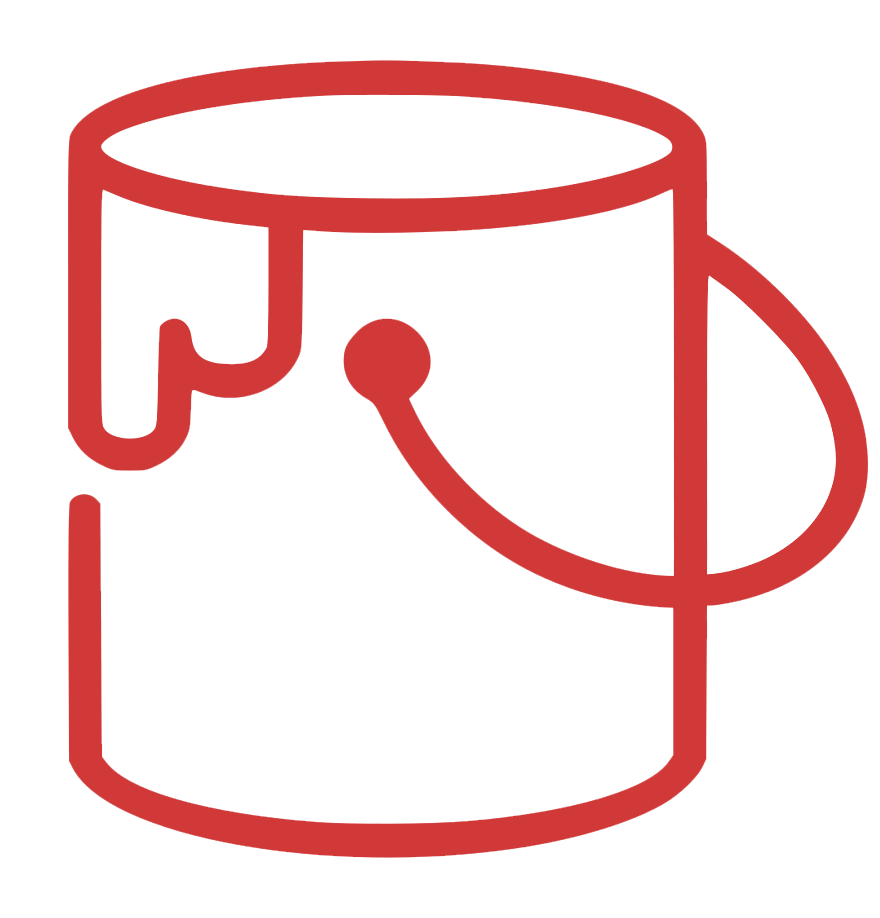How Much Paint Should I Buy?
This is not really as complicated as it sounds or as some make it out to be. You do not need to be a professional painter with years of experience to figure this out. There are lots of paint calculators out there and some are easy to use. Going online to calculate the paint is not necessary. Digging through a paint manufacturers website to find there calculator is not necessary also. This also can be very time consuming.
I simple calculator on your phone is all you need. Well you need the paint can of the product you are using which will tell you how many square feet the paint will cover. This will be in the instructions on every can of paint. Every paint out there has a number of square feet on average the paint will cover. If you do no know or do not have the paint with you, use 400 sqft per gallon as your simple starting point. Some paints are more some are less.
Once you have enough experience you will no longer have to break out a calculator to figure this out. I have eyed the amount of paint I need for a job for at least the last eight years. No calculators just experience from previous jobs. This is made a little easier as I have the convenience of have Sherwin Williams deliver paint to my job site if I run out at any time. With out that time saving convenience it is better to over buy in quantity as gas and time spent driving and waiting in line, will usually be more then what the paint is worth. If I am ever not near a paint supplier I always buy more then what I need. If I am near a paint store and a delivery can be made I buy less.
If you buy less, you have to be very careful to not run out. This is a very important tip. Running out is very bad. Here is why. No two gallons are alike no matter where they are mixed and even if they are mixed in the same store. There are two many variables at play. Tint inconsistencies, quality of paint dictates tint control, human error, different lots of the same paint, calibration inconsistencies if purchased from one day to the next are few issues that cause very slight color differences that will be very noticeable if you run out of paint. If you to continue or go back to do touch ups with another gallon of paint I can assure you you will see a difference. This also holds true if you have 3 gallons of paint bought at the same time from the same place and you fail to “box” them together. That is mix all three gallons together prior to painting.
I do have some pointers and good starting points if you are new at the estimating game. Here are some good pointers that will save you time and will make sure your job looks like a professional did it.
- Buy more than what you need.
- Always buy at least one gallon, never a quart.
- The price of 2 quarts is always more then the price of 1 gallon
- Semi gloss paints always take more then flat paints
- No paint covers in one coat. Don’t believe the lie.
- This is true for all color changes.
- Don’t be suckered into believing you have to prime everything
- Every store is taught to UPSELL you to a primer
- If you need at least 5 gallons buy 5 gallons not in singles
- Don’t forget to remove doors and windows from calculations
- Doors are typically 21 sqft and windows 15 sqft
- A bedroom will always take more then 1 gallon
- Here are some averages I go by painting walls only
- 2 gallons for all average sized bedrooms
- 3 gallons for master bedrooms
- 1 gallon for small bathrooms & powder rooms
- 2 gallons for large bathrooms
- 1 gallon for closets
- 2 gallon for walk in closets
- 2 gallons for an average living room
- 3 gallons if ceilings are vaulted
- 1 gallon for a kitchen
- 1 gallon for hallways
- 7 gallons for a 2 car garage
- 3 gallons for an average bonus room
- Cheap paints take more coats and make big messes
INTERIOR PAINT CALCULATion FORMULA




